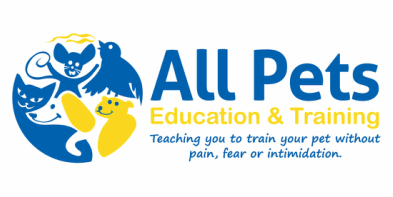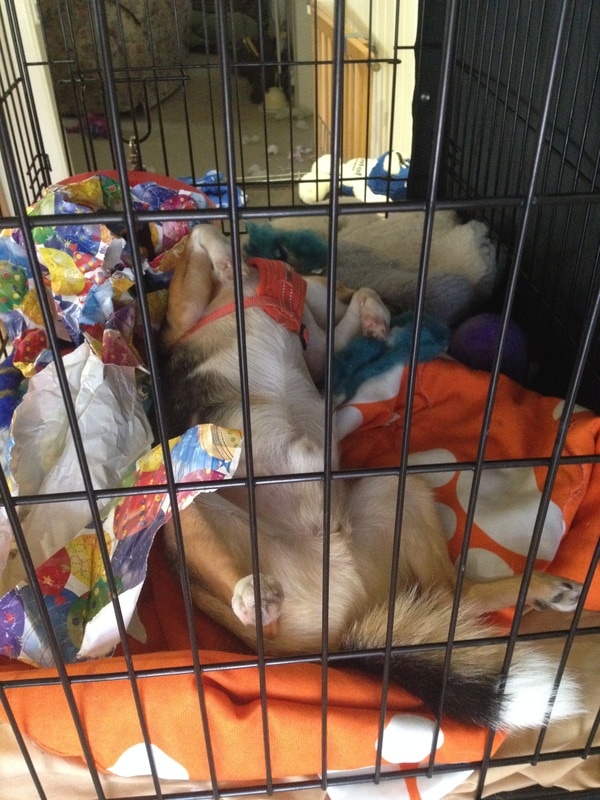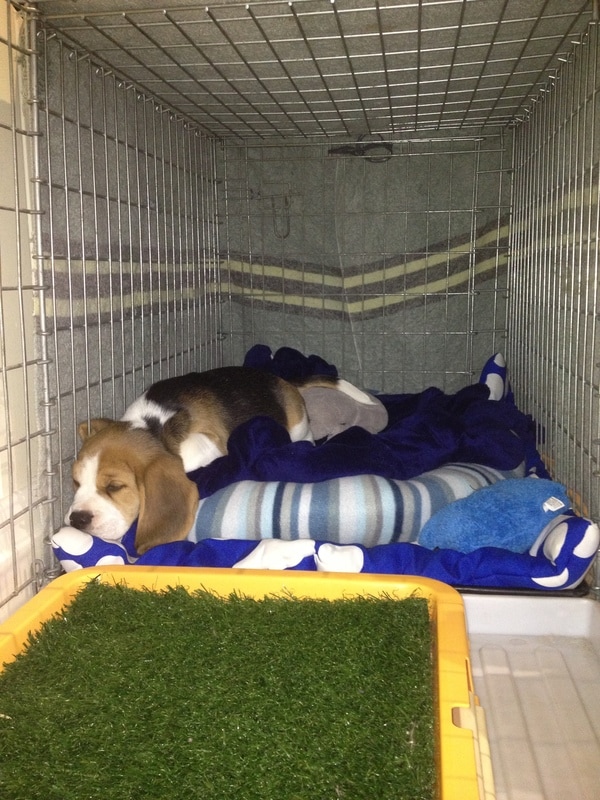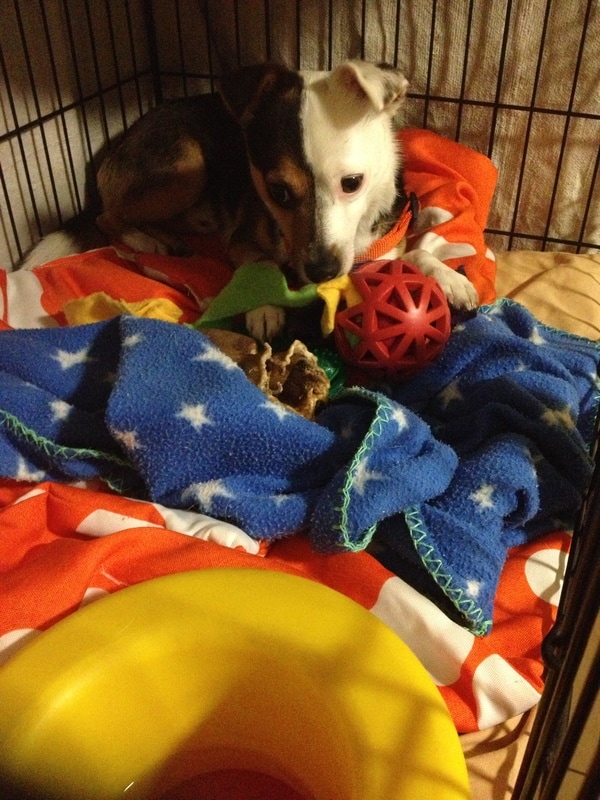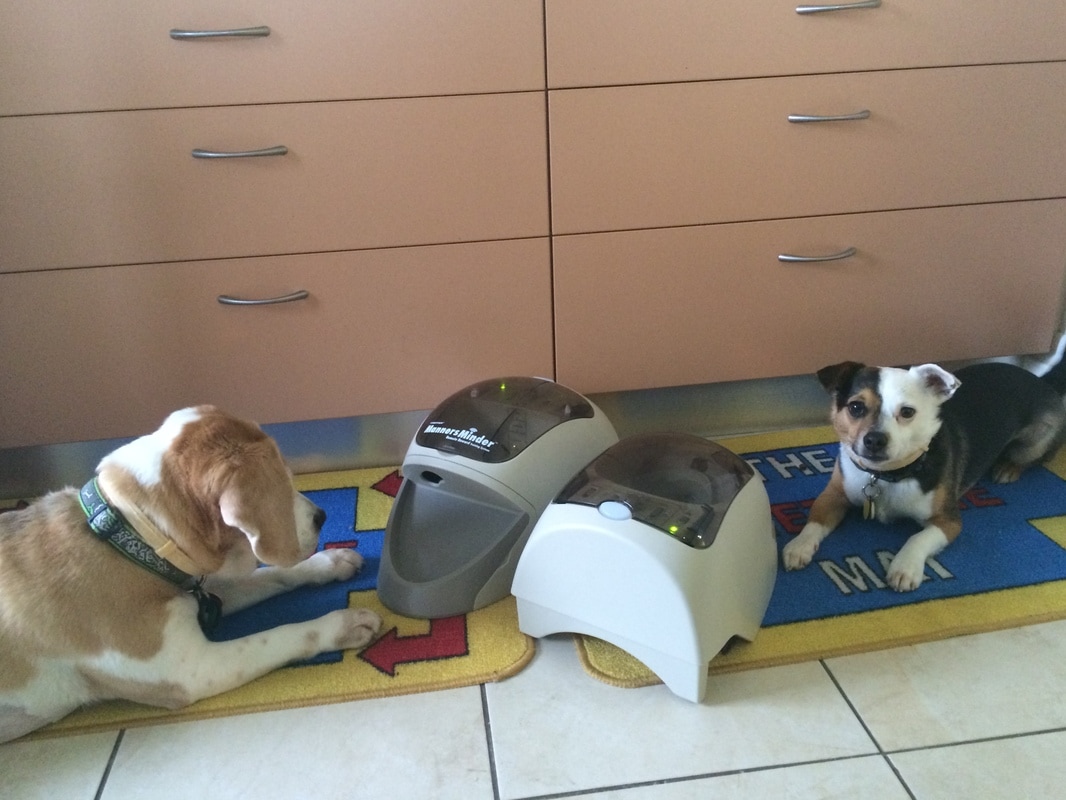Alone Time is Good - The importance of teaching your dog to be alone.
Congratulations – owing a dog is one of the most rewarding things you can do. However it can also be challenging if things aren’t put into place.
Ideally you are implementing this with your newly acquired puppy, however, this will work with older dogs too, it just may take a little longer.
Imagine your new pup, they are soooo cute, and naturally you want to be with them all the time, and they usually want to be with you too. However this is where problems can arise.
Now also imagine how confusing this is for your pup, or even newly acquired dog. Pups generally have at least a couple of litter mates that they can muck around with, chew on, and snuggle with (as well as their mum).
This pup is now in this strange new environment, without his/her littermates or pup mum, or even people that he/she knew before. It must be really quite a stressful time for them, so we need to do our best to transition them to our families and also set them up to succeed as well.
Maybe you’ve made the decision to get your puppy or dog when you are on holidays for a week or two or even just to spend a few days with them, prior to returning to work or back to running errands etc.
This is great and ideal, however, one of the most important things during these times is to also teach your puppy/dog to be comfortable in being alone.
Pups and dogs that don’t learn to be comfortable without human company may turn into dogs that develop high levels of separation distress or anxiety as they develop further.
So what should you do?
Ideally you are implementing this with your newly acquired puppy, however, this will work with older dogs too, it just may take a little longer.
Imagine your new pup, they are soooo cute, and naturally you want to be with them all the time, and they usually want to be with you too. However this is where problems can arise.
Now also imagine how confusing this is for your pup, or even newly acquired dog. Pups generally have at least a couple of litter mates that they can muck around with, chew on, and snuggle with (as well as their mum).
This pup is now in this strange new environment, without his/her littermates or pup mum, or even people that he/she knew before. It must be really quite a stressful time for them, so we need to do our best to transition them to our families and also set them up to succeed as well.
Maybe you’ve made the decision to get your puppy or dog when you are on holidays for a week or two or even just to spend a few days with them, prior to returning to work or back to running errands etc.
This is great and ideal, however, one of the most important things during these times is to also teach your puppy/dog to be comfortable in being alone.
Pups and dogs that don’t learn to be comfortable without human company may turn into dogs that develop high levels of separation distress or anxiety as they develop further.
So what should you do?
Number 1:
Set up a safe place that your puppy/dog will be housed when you are not home, but also, and this is very important, at times when you are home.
This area should include access to water (non spill bowl), a comfortable bed, a snuggly toy for the pup and a toilet area if your pup/dog is going to be housed for a time longer than their bladder can hold. For puppies that is generally 1 hour for every month they are old up to about 5 hours.
This safe place, could be a pen, a crate or even a baby gated room. It doesn’t have to be stationary.
Initially this safe place should be in or near an area that you spend time when you are home, so that they are able to see you but not follow you. The distance from you can be changed as your pup/dog progresses.
My pups used crates and pens, and I had a crate beside my bed in the initial weeks to ensure that I knew the pup was ok, the pup knew I was there (but couldn’t be right on top of me), and I could hear the pup and take him out to toilet during the night when he needed to go.
If you are setting up a pen, set it up long and thin. The reason for this, is that when you put their bed at one end, and the toilet substrate at the other, the pup/dog naturally tries to toilet as far from their sleeping area as possible (well most do anyhow – you may have the exception to the rule). This is an easy way to start the toilet training process for most pups.
Set up a safe place that your puppy/dog will be housed when you are not home, but also, and this is very important, at times when you are home.
This area should include access to water (non spill bowl), a comfortable bed, a snuggly toy for the pup and a toilet area if your pup/dog is going to be housed for a time longer than their bladder can hold. For puppies that is generally 1 hour for every month they are old up to about 5 hours.
This safe place, could be a pen, a crate or even a baby gated room. It doesn’t have to be stationary.
Initially this safe place should be in or near an area that you spend time when you are home, so that they are able to see you but not follow you. The distance from you can be changed as your pup/dog progresses.
My pups used crates and pens, and I had a crate beside my bed in the initial weeks to ensure that I knew the pup was ok, the pup knew I was there (but couldn’t be right on top of me), and I could hear the pup and take him out to toilet during the night when he needed to go.
If you are setting up a pen, set it up long and thin. The reason for this, is that when you put their bed at one end, and the toilet substrate at the other, the pup/dog naturally tries to toilet as far from their sleeping area as possible (well most do anyhow – you may have the exception to the rule). This is an easy way to start the toilet training process for most pups.
Number 2:
Teach your pup to use food dispensing toys. Ideally toys that will keep them still, and encourage them to lie down and lick/chew. The reason for this, is that if they are licking and chewing, endorphins (happy hormones) are released, and if they are lying down while receiving the food and the feel good endorphins, it reinforces this behaviour as the ideal behaviour when you are confined. IE, rather than running around like a kid in a candy store.
The toy I prefer for most pups/dogs is a kong – make sure it is an appropriate size and strength for your pup/dog. And don’t just use peanut butter. Refer to the kong recipe list for ideas.
My standard kong pack, consists of a small amount of dry food in the bottom, next the rest fairly firmly packed with raw food or canned, and then the large hole blocked with a roo tendon, or doggie chocolate etc. Make the kong initially easy enough so that the pup/dog can succeed and gradually increase the difficulty. You may need to show your pup/dog how it works, or smear some liver paste etc over the outside to get him/her interestes in it.
My dogs now also have them frozen to increase the difficulty.
If your pup/dog bounces or rolls the kong around excessively try tying it in the back of the crate or to the edge of the pen (or any other solid surface). Make sure if you do this, that wherever it is tied your pup/dog can lie down while eating it, and they are on something comfortable.
Teach your pup to use food dispensing toys. Ideally toys that will keep them still, and encourage them to lie down and lick/chew. The reason for this, is that if they are licking and chewing, endorphins (happy hormones) are released, and if they are lying down while receiving the food and the feel good endorphins, it reinforces this behaviour as the ideal behaviour when you are confined. IE, rather than running around like a kid in a candy store.
The toy I prefer for most pups/dogs is a kong – make sure it is an appropriate size and strength for your pup/dog. And don’t just use peanut butter. Refer to the kong recipe list for ideas.
My standard kong pack, consists of a small amount of dry food in the bottom, next the rest fairly firmly packed with raw food or canned, and then the large hole blocked with a roo tendon, or doggie chocolate etc. Make the kong initially easy enough so that the pup/dog can succeed and gradually increase the difficulty. You may need to show your pup/dog how it works, or smear some liver paste etc over the outside to get him/her interestes in it.
My dogs now also have them frozen to increase the difficulty.
If your pup/dog bounces or rolls the kong around excessively try tying it in the back of the crate or to the edge of the pen (or any other solid surface). Make sure if you do this, that wherever it is tied your pup/dog can lie down while eating it, and they are on something comfortable.
Number 3:
Use the pen/crate/baby gated area both when you are home, and when you aren’t. Use this as an area to feed your pup their dinner, or a long lasting chew. Encourage this area to be a favoured sleeping spot and make sure good stuff happens in there and leave the gate/door open when the pup/dog is not actively confined by you so that he/she has the choice of going to the spot. If he/she does choose to use this area – reward, reward, reward.
Start also putting your pup in the area for short periods, but never as punishment or a timeout. This area needs to be seen as a chill space. Pick your time, so that it is not when your pup is at its most worked up or excited time – we want to set them up to succeed.
Stay close by to the area, but do something for yourself, so that you aren’t just sitting there staring at your pup/dog (that’s weird). Sit on a chair etc next to them (with the barrier between you and them) and read a book or play on your phone, or go about making dinner, folding washing, you know, the boring stuff that someone has to do.
Whenever your pup is quiet, and not whining, jumping, barking, digging etc say “yes”, “good” or something similar and drop in a small (fingernail sized) highly desired reward (BBQ chicken or grated cheese are usually winners). It is important to focus on rewarding the pup when he/she is relaxed.
You can also reward while they have the kong – that will then also mean your approach while they have food and a highly desirable resource (the kong), is a good thing, because you bring more good stuff. This will help to prevent/minimise resource guarding.
Initially you will need to reward frequently, say a couple of rewards a few seconds apart, than 5 seconds for a few goes, 10 seconds for a few goes, and build it up etc. You will find that once you reach a minute of calm and reward, you will be able to reward at greater intervals. You can also start increasing your criteria, and rewards are delivered now for when the dog is sitting rather than standing, or lying down rather than sitting.
However, as your next step is to increase distance between you and the barrier area, you will need to observe the 4 D’s of dog training and decrease the duration as you increase the distance or difficulty.
Now that your pup/dog is ok in their area when you are close by, we need to start increasing the distance that you are away. That could mean you walk around the room, come back, reward if calm, walk out of the room, immediately come back and reward if calm. If the pup/dog is starting to get worried, it means he/she is not ready and you have progressed to fast.
Build up over time, and increase the distance (until out of sight), and then increase the duration that you are out of sight and between rewards.
It is at this time a remote controlled food dispensing toy can be particularly useful. Two brands that I own and use are the Treat and Train, or Train and Praise (there is a remote that you can press and release kibble from a distance away – don’t get to excited – you still need to be within the house).
The Treat and Train also has the added advantage that you can put it on a timer and it will release kibble at set durations.
Use the pen/crate/baby gated area both when you are home, and when you aren’t. Use this as an area to feed your pup their dinner, or a long lasting chew. Encourage this area to be a favoured sleeping spot and make sure good stuff happens in there and leave the gate/door open when the pup/dog is not actively confined by you so that he/she has the choice of going to the spot. If he/she does choose to use this area – reward, reward, reward.
Start also putting your pup in the area for short periods, but never as punishment or a timeout. This area needs to be seen as a chill space. Pick your time, so that it is not when your pup is at its most worked up or excited time – we want to set them up to succeed.
Stay close by to the area, but do something for yourself, so that you aren’t just sitting there staring at your pup/dog (that’s weird). Sit on a chair etc next to them (with the barrier between you and them) and read a book or play on your phone, or go about making dinner, folding washing, you know, the boring stuff that someone has to do.
Whenever your pup is quiet, and not whining, jumping, barking, digging etc say “yes”, “good” or something similar and drop in a small (fingernail sized) highly desired reward (BBQ chicken or grated cheese are usually winners). It is important to focus on rewarding the pup when he/she is relaxed.
You can also reward while they have the kong – that will then also mean your approach while they have food and a highly desirable resource (the kong), is a good thing, because you bring more good stuff. This will help to prevent/minimise resource guarding.
Initially you will need to reward frequently, say a couple of rewards a few seconds apart, than 5 seconds for a few goes, 10 seconds for a few goes, and build it up etc. You will find that once you reach a minute of calm and reward, you will be able to reward at greater intervals. You can also start increasing your criteria, and rewards are delivered now for when the dog is sitting rather than standing, or lying down rather than sitting.
However, as your next step is to increase distance between you and the barrier area, you will need to observe the 4 D’s of dog training and decrease the duration as you increase the distance or difficulty.
Now that your pup/dog is ok in their area when you are close by, we need to start increasing the distance that you are away. That could mean you walk around the room, come back, reward if calm, walk out of the room, immediately come back and reward if calm. If the pup/dog is starting to get worried, it means he/she is not ready and you have progressed to fast.
Build up over time, and increase the distance (until out of sight), and then increase the duration that you are out of sight and between rewards.
It is at this time a remote controlled food dispensing toy can be particularly useful. Two brands that I own and use are the Treat and Train, or Train and Praise (there is a remote that you can press and release kibble from a distance away – don’t get to excited – you still need to be within the house).
The Treat and Train also has the added advantage that you can put it on a timer and it will release kibble at set durations.
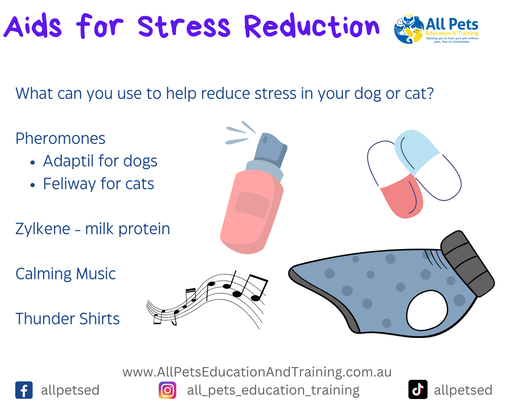
What else can help your pup/dog relax.
Things that have been proven to help dogs or puppies that are experiencing stress include ADAPTIL (Canine Dog Appeasing Pheromone) and classical music.
There is no harm is playing classic FM, or Through a Dog’s Ear, and using ADAPTIL. Three of my dogs wear ADAPTIL collars – each collar lasts about a month and needs to be fitted firmly as they are activated by body heat. ADAPTIL also comes as a diffuser (works well in confined places, but not open plan houses), and a spray (each application lasts 2 hours).
Thunder shirts are also useful, however in the Australian climate I would only use these when you are able to supervise, or during winter or in air-conditioning.
Capture Calmness – Emily Larlham's Kikopup video on capturing calmness is incredibly useful, and in any dog can be helpful and easily implemented (both when the pup/dog is in or out of the confinement area).
Things that have been proven to help dogs or puppies that are experiencing stress include ADAPTIL (Canine Dog Appeasing Pheromone) and classical music.
There is no harm is playing classic FM, or Through a Dog’s Ear, and using ADAPTIL. Three of my dogs wear ADAPTIL collars – each collar lasts about a month and needs to be fitted firmly as they are activated by body heat. ADAPTIL also comes as a diffuser (works well in confined places, but not open plan houses), and a spray (each application lasts 2 hours).
Thunder shirts are also useful, however in the Australian climate I would only use these when you are able to supervise, or during winter or in air-conditioning.
Capture Calmness – Emily Larlham's Kikopup video on capturing calmness is incredibly useful, and in any dog can be helpful and easily implemented (both when the pup/dog is in or out of the confinement area).
Important things to be cautious about:
Make sure your pup/dog has had an opportunity to toilet, and a good run around or mental brain training game before expecting them to be confined for any lengthy periods of time.
Dogs are observant and smart creatures – if you have a pup/dog in particular that is already showing signs of distress when they can’t be right with you – make sure that you intermix the toys or treats when you are both home and away. That way, your pup won’t recognise the difference in the toys and start getting worried before you have even departed. It’s that classic “oh it’s the kong today not the treat cone. I only get the kong when mum and dad go to work….arrgghhhh!”
If your pup/dog is not improving talk to your veterinarian. It is important to get on top of distress moving toward anxiety before it gets out of hand.
Make sure your pup/dog has had an opportunity to toilet, and a good run around or mental brain training game before expecting them to be confined for any lengthy periods of time.
Dogs are observant and smart creatures – if you have a pup/dog in particular that is already showing signs of distress when they can’t be right with you – make sure that you intermix the toys or treats when you are both home and away. That way, your pup won’t recognise the difference in the toys and start getting worried before you have even departed. It’s that classic “oh it’s the kong today not the treat cone. I only get the kong when mum and dad go to work….arrgghhhh!”
If your pup/dog is not improving talk to your veterinarian. It is important to get on top of distress moving toward anxiety before it gets out of hand.
